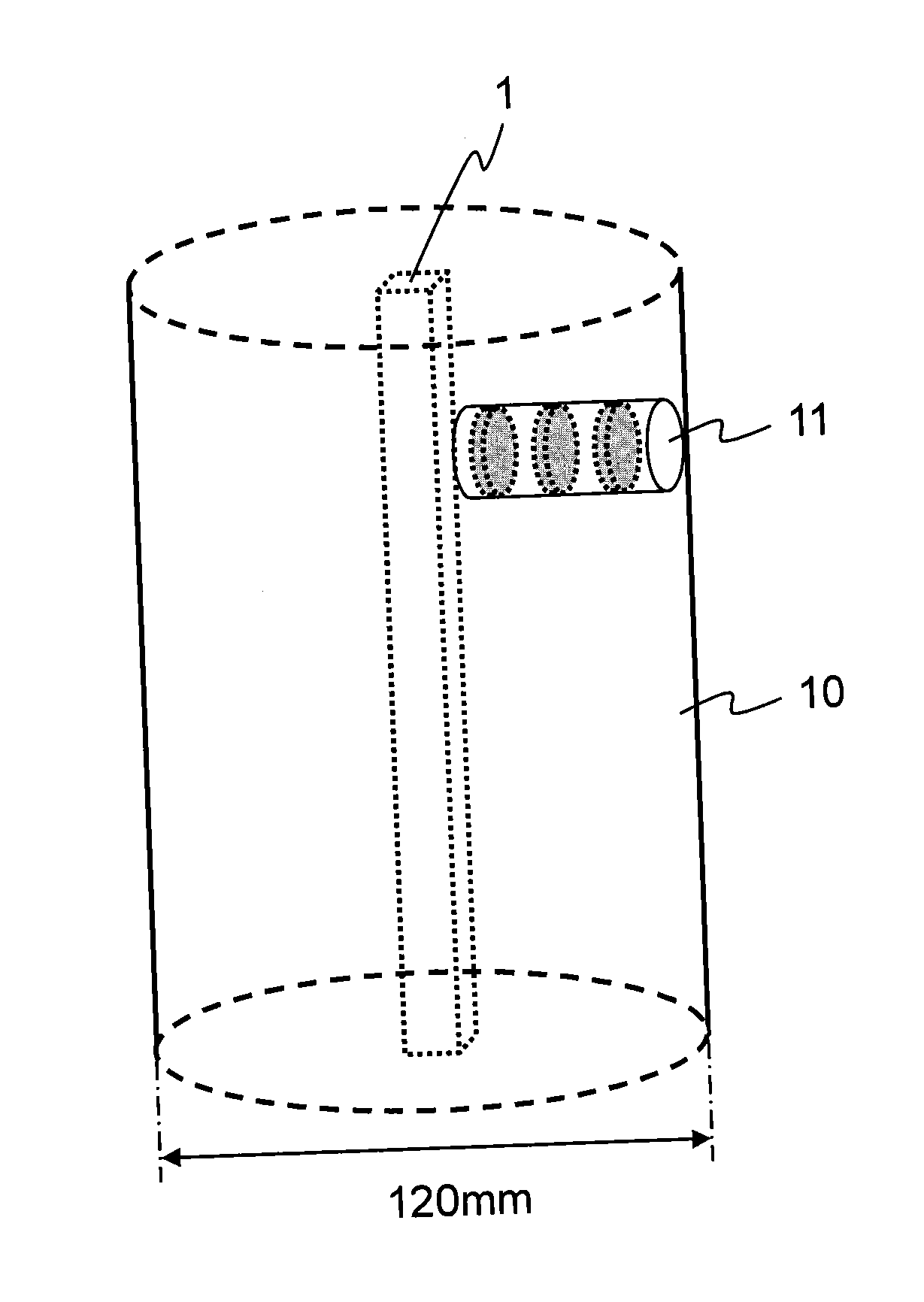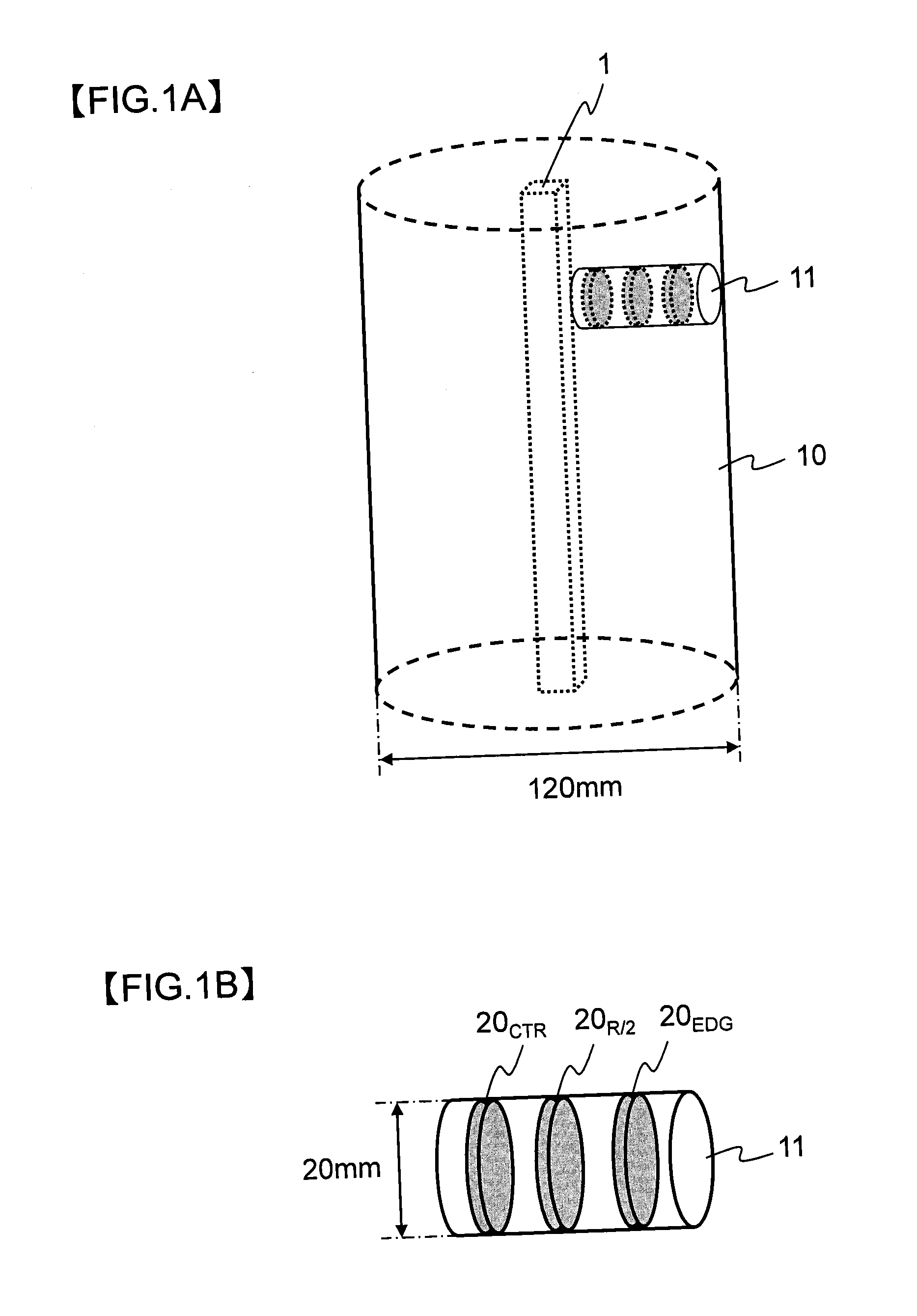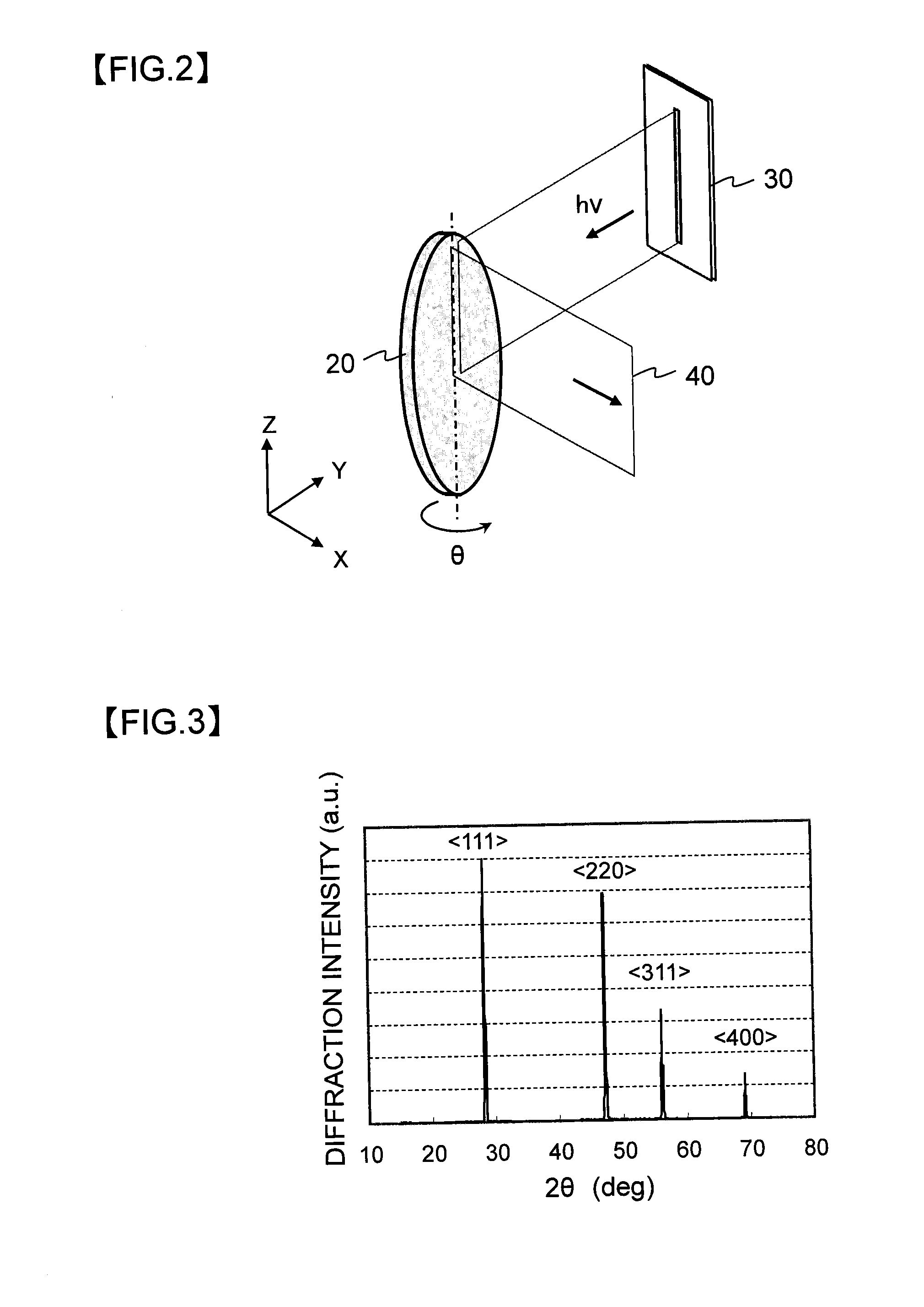Method for evaluating degree of crystal orientation in polycrystalline silicon, selection method for polycrystalline silicon rods, and production method for single-crystal silicon
a technology of polycrystalline silicon and crystal orientation, applied in the direction of silicon compounds, material analysis using wave/particle radiation, instruments, etc., can solve the problems of loss of crystal lines and generation of dislocation, and achieve the effect of reducing local generation of partial melting residues and stable production of single-crystal silicon
- Summary
- Abstract
- Description
- Claims
- Application Information
AI Technical Summary
Benefits of technology
Problems solved by technology
Method used
Image
Examples
examples
[0067]Four polycrystalline silicon rods grown under different deposition conditions were prepared. For each of these polycrystalline silicon rods (silicon rods A to D), roughly 2 mm thick plate-like samples (20CTR, 20EDG, and 20R / 2) were extracted from the three portions shown in FIGS. 1A and 1B, and by the measurement system shown in FIG. 6, a φ-scanning chart for the Miller index planes and was obtained. The diameter of the plate-like sample 20 was approximately 20 mm.
[0068]Table 1 summarizes, for each plate-like sample obtained from these polycrystalline silicon rods, the number of peaks (converted into unit per area) and the maximum value (maximum grain size) of the inhomogeneous crystal grain size calculated from these peaks, as well as whether there was loss of crystal lines when a single-crystal silicon rod was grown by the FZ method using the polycrystalline silicon rod.
TABLE 1Number of peaksMaximum grainLoss ofSiliconPlate-like(cm2)size (mm)crystalrodsamplelineA20CTR00——W...
PUM
| Property | Measurement | Unit |
|---|---|---|
| Grain size | aaaaa | aaaaa |
| Length | aaaaa | aaaaa |
| Ratio | aaaaa | aaaaa |
Abstract
Description
Claims
Application Information
 Login to View More
Login to View More - R&D
- Intellectual Property
- Life Sciences
- Materials
- Tech Scout
- Unparalleled Data Quality
- Higher Quality Content
- 60% Fewer Hallucinations
Browse by: Latest US Patents, China's latest patents, Technical Efficacy Thesaurus, Application Domain, Technology Topic, Popular Technical Reports.
© 2025 PatSnap. All rights reserved.Legal|Privacy policy|Modern Slavery Act Transparency Statement|Sitemap|About US| Contact US: help@patsnap.com



